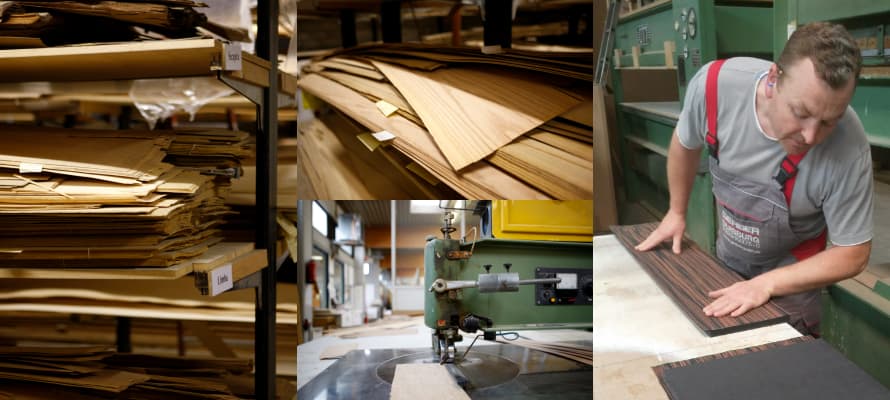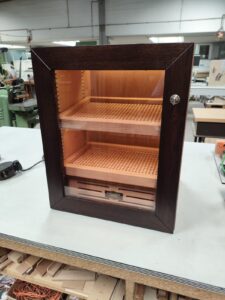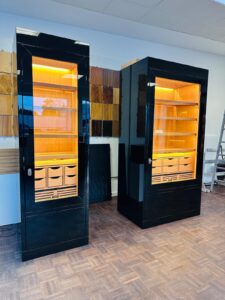The discovery of veneer or its technique is attributed to the ancient Egyptians. Already with Tutanchamun in the grave pieces of furniture provided with veneer were found. As Egypt was already at that time a country with low tree density, wood was used sparingly. Particularly valuable or beautiful trees were cut very thinly and applied with glue to less rare woods. The technique of veneering was developed. The processes and methods have been refined over the centuries, but the basic idea has remained the same: to use the most beautiful woods in a way that conserves resources. According to the same principle we use the exotic and rare woods in the production of our humidors with controlled relative humidity. Only high-quality woods can be used as veneer in humidor construction.
Pictures in wood
Some of the early veneered furniture from ancient Egypt were particularly outstanding artistic and elaborate works. The applied leaves are reminiscent of faces, animal figures and other mystical figures. Even then, furniture was more than just functional objects for storage. They have always been an expression of the taste and preferences of their owners. Proud craftsmen have put their heart and soul into the creation of this piece of furniture in order to make the best out of wood. Today we manufacture our cigar cabinets in our manufactory with the same passion. Every humidor is a collector’s item and a lifelong pleasure for our customers.
Surface treatment
The rough, untreated wood often only gives an idea of its potential for beauty. In order to make the wood shine, the surface was polished smooth with rubbing stones or even ray skin. The master carpenters of the time rubbed the wood with natural, fragrant oils. Today there are many possibilities to ignite the veneer of our humidors. The veneer wood in humidors is treated differently: from silk matt to high-gloss we can create different effects with our surfaces.
Some rare veneers have particularly expressive patterns and grains. Rotating wood produced strong turbulences and swirls. These are reminiscent of peacock feathers or even living faces. From dotted structures to classic stripes or even pyramid shapes in wood, many pictures are possible. The veneer sheets are laid in rows or mirrored depending on the width of the tree from which they were extracted. This is how the traditional folding pictures are created, which we often combine with the classical veneer technique. On our humidors you can admire rare and unusual woods.



